Last Updated on 29/12/2023
It would seem that half-timbered towns are nothing new for us. But Einbeck turned out to be a real jewel in our collection: here you don’t need to look for a couple old buildings on the map, you get the feeling that the city has hardly changed since the 16th century.
West Harz from Goslar to Göttingen
Harz attractions map. From Wernigerode to Tilleda
Coast of Germany. Lower Saxony and Hamburg. What to visit
Luneburg Heath
Harz mountains. Wernigerode old town
Harz. 2. Brocken, Wurmberg
Harz Goslar What to see
Despite the fact that the city is quite small (just over 25 thousand inhabitants), it was noticeable in history: as one of the cities of the Hanseatic League and as a city of breweries. There is still a brewery there, but it is the automobile museum, which occupies several sites at once, that is perceived as the most important tourist attraction (besides the old city).
Einbeck is also trying to present itself as the city of Till Eulenspiegel – the hero of a picaresque novel of the 16th century, who, according to legend, visited here. The connection is far-fetched, in my opinion, but many cities are trying to exploit this or that history for tourism purposes.
Einbeck is more than worth a visit if you’re stopping off on your way north or on holiday in the western part of Harz. Allow half a day for a walk and the main site of the automobile museum. If you visit other sites, it is better to devote most of the day to the city.
How to get to Einbeck
Public transport: train.
There is some parking around the perimeter of the old center. If you visit the automobile museum, you can park at one of its sites.
A little history
A market settlement developed in the 12th century from small villages and a monastery. It was located on a trade route, so it grew quickly, acquired a moat, a city wall and city rights already in the 13th century. From the 14th century, Einbeck exported its Bockbier beer and joined the Hanse.
Everything continued well in the 15th century, but from the 16th century the city’s luck ceased: there were several major fires (the first fire in 1540 destroyed the entire city), plague, and wars. However, it has not fallen completely into negligence; several large enterprises operate here.
Einbeck Car Museum PS.Speicher
Let’s start with the car museum: depending on which parts of it you want to visit (or whether you want to visit it at all), you need to choose a day of visit and parking.
The PS.Speicher Museum is relatively new – it opened in 2014 in a historic granary. At the heart of the museum is the largest collection of German motorcycles in the world from collector K.H. Rehkopf. It was also joined by the largest collection of small cars in the world from Störy and a collection of freight and public transport.
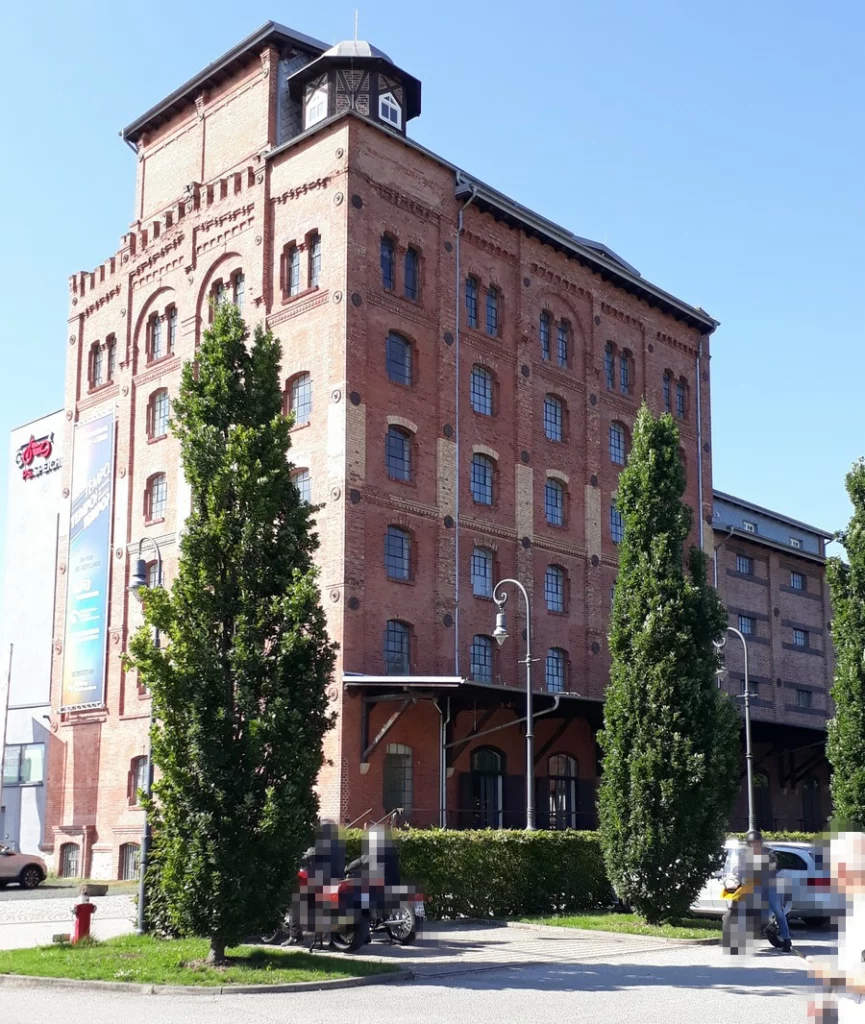
The largest in the world are not just empty words: the storage facilities are truly huge. The collection is exhibited in the main building, but most of it is distributed in “depots”. The depots are located around the old center.
The main building displays a selection from oldest to newest. The halls are dedicated to time intervals of approximately 10-20 years. At least half of exhibits are motorcycles. Each room also represents the “interior” of the era: photographs, things, mannequins. Interesting and educational even for those who are not fans of old cars. Lots of multimedia and small stations for children.
Downstairs at the ticket office are exhibition halls with changing displays.
A separate ticket is required for the racing simulator.
Depots do not work every day, but a couple of days a week. Check the schedule carefully. These are huge halls lined with cars or motocycles:
depot Trucks plus buses
depot Small cars
depot Cars
depot Motorcycles
Einbeck old town
The bypass road around Einbeck seems endless, but this is an optical illusion. Turning inside, you will quickly find yourself at the fortress walls. The fortress wall survived on the southwestern side of the city. There is a park along the walls and ramparts.
We are now at the western entrance to the city, next to the main site of the car museum and just at the beginning of the preserved quarter of the walls.
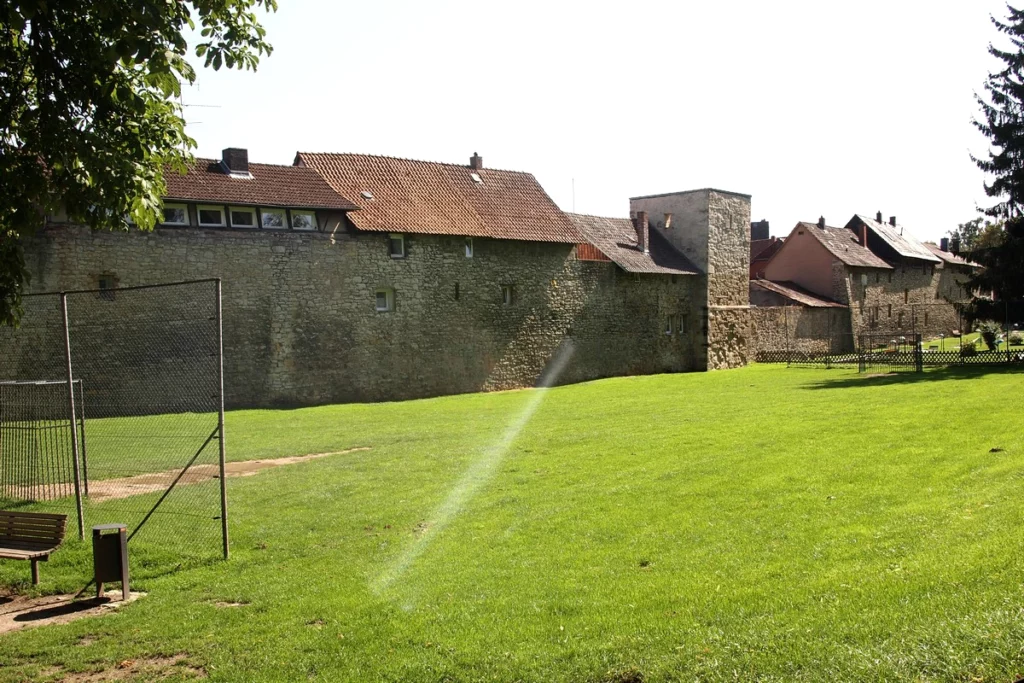
We pass through the Tiedexer Tor gate onto the most stunning street in the city with the same name.
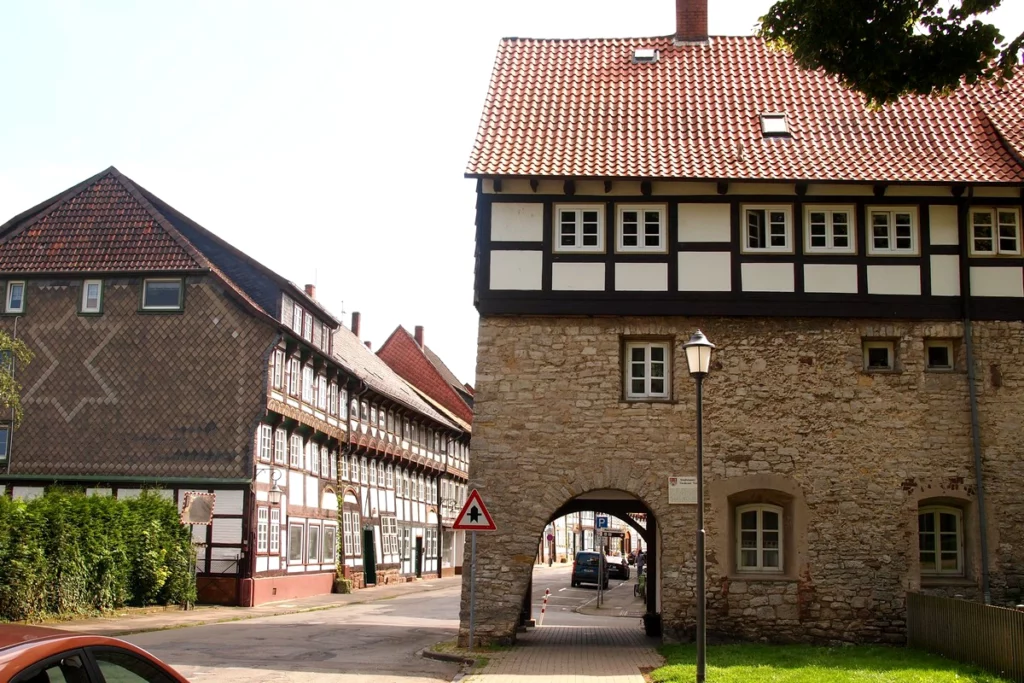
An entire Renaissance street, 16th century. In total, there are 150 (!) houses in Einbeck from the mid-16th century, built after the great fire of 1540.
Read about the styles, decorations and features of half-timbered houses in the topic Half timbered houses in Germany through history
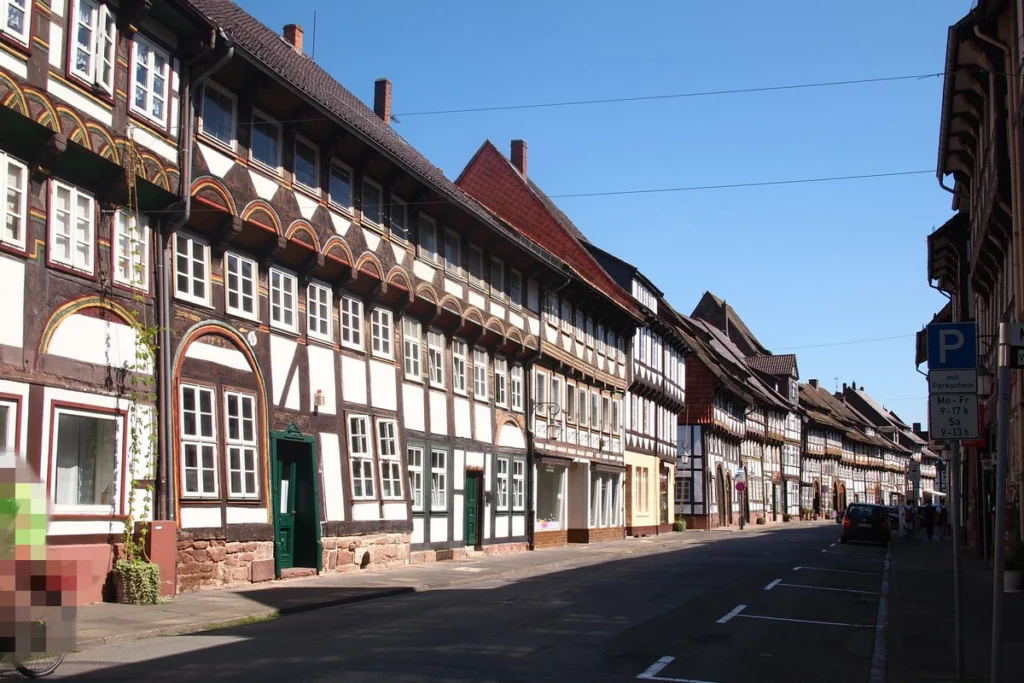
Many facades still have a large gate or arch marking the place where they were. This gate led to the working part of the house, the so-called Diele, which occupied two floors. For example, beer could be brewed there. Often there was an open hearth. Living rooms (Stube) were separated from the working area.
Above, in the high attic spaces, there were warehouses. That’s why the roofs are so big. Then the floor above the work floor became living, but often living quarters were added to the back in the form of an additional wing of the building. Therefore, it makes sense to look inside this quarter and see the small half-timbered houses.
Many houses also had bay windows, but for some reason they were removed in the 18th century.
Corner “crooked” house (the façade tilts quite decently to the left, but the side wall straightens it out). From the side it is clearly visible that the upper part was intended for warehouses.

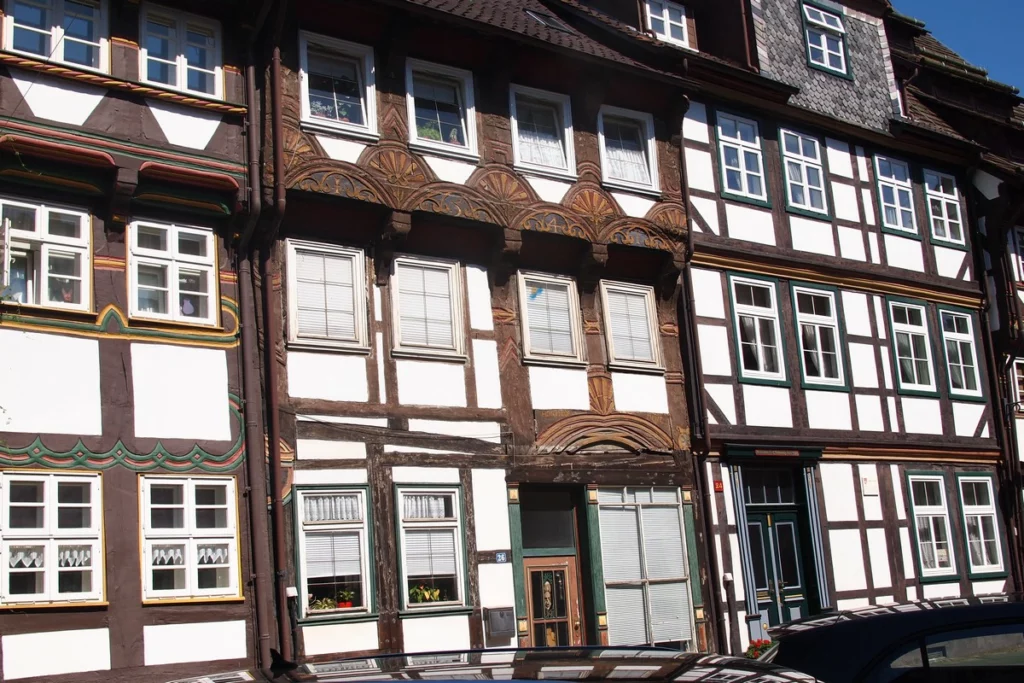
House 22 on the left is still considered late Gothic, and house 20 is considered early Renaissance. All but one of the houses on this side of the street are protected as architectural monuments.
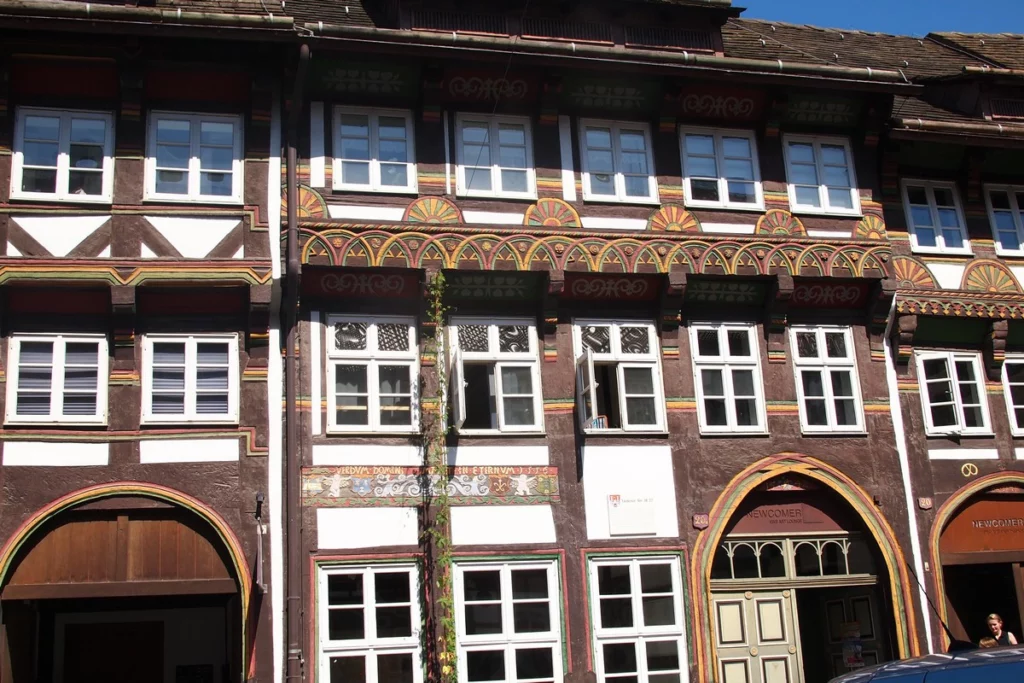

We go out to the Market Square (Marktplatz).

Church of St. Jacob was built in the 14th and 15th centuries and was rebuilt and completed several times. The oldest decoration of the church is the altar (1400), but in general the inside is not very interesting. The church tower is “leaning”: it is tilted one and a half meters to the west.
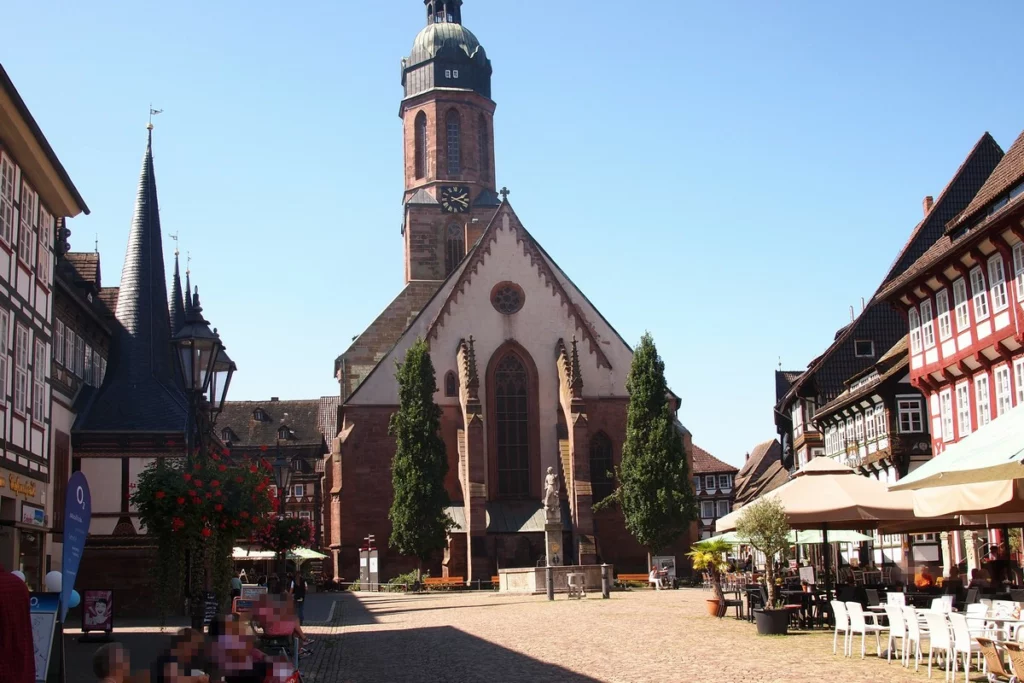
In front of the church is the Till Eulenspiegel fountain (modern), on the left with turrets is the old town hall.
The old town hall was located on this site already during the period of obtaining city rights. But the current building was built in the 16th century from what was left after two fires and a gunpowder explosion in the basement. Now it is used for events and as a registry office. On the right it is adjacent to scales house.
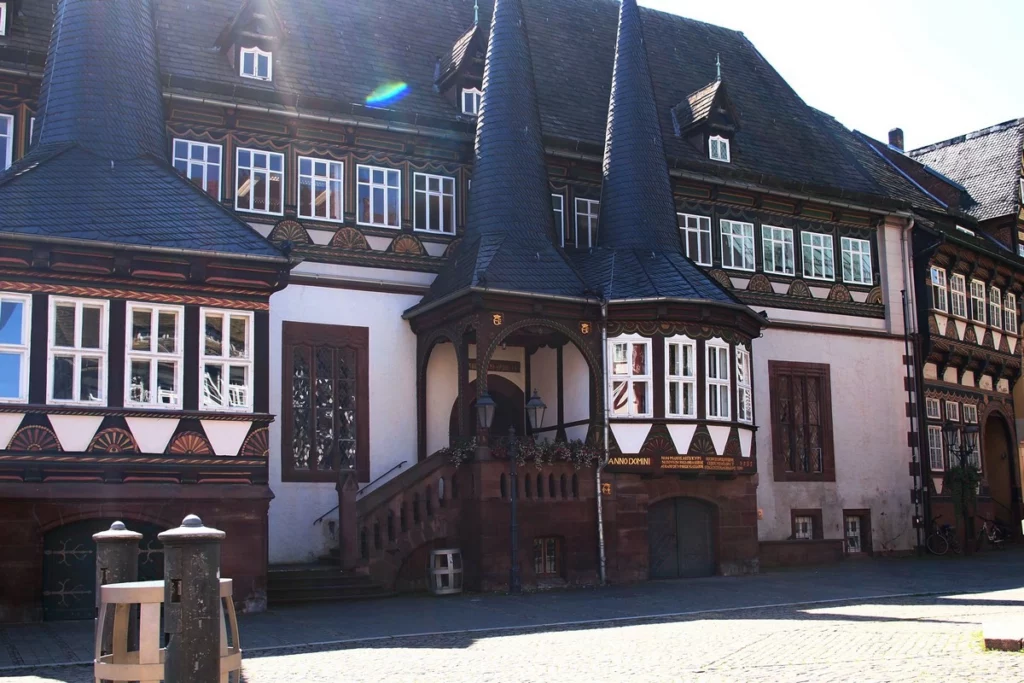
On the north side of the street there are half-timbered buildings from the 16th century.
Brodhaus – home of the bakers’ guild.
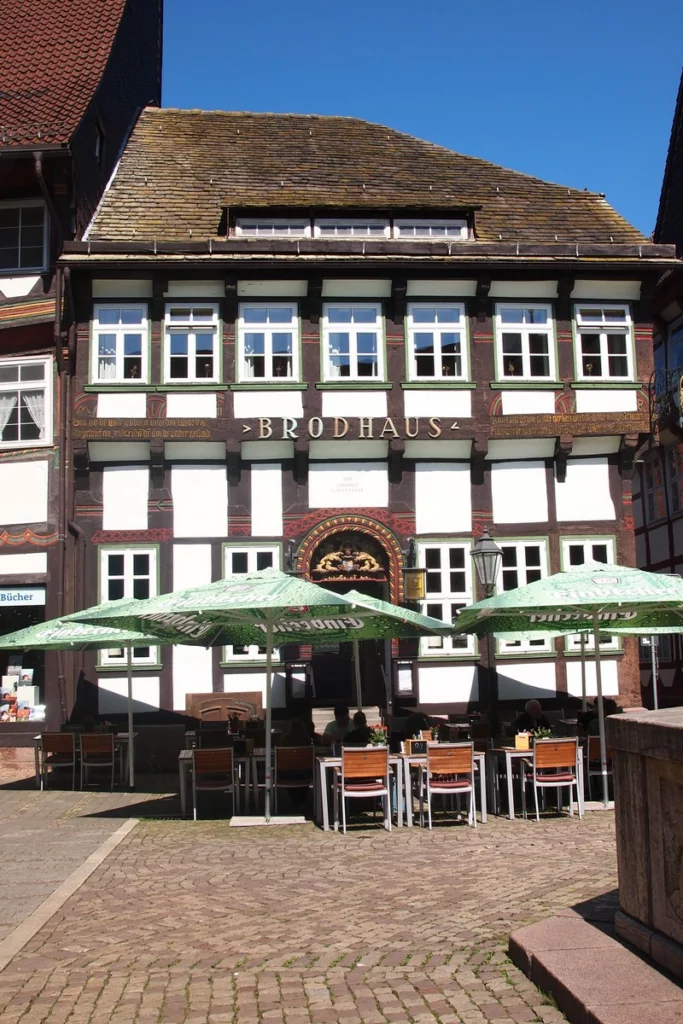
It’s not for nothing that the roof of the red building behind the Eulenspiegel fountain looks overly powerful – these are actually two houses united by one roof, when the corner building (pharmacy) was sold to a local noble family after a fire. It seemed to them that one house was not enough.

On the site of the large brown building there was also a half-timbered mansion, which was later used as a factory. The factory burned down, so the current structure is from the 20th century.

Now let’s walk along Marktstrasse. The most interesting buildings are behind the church and the information office.
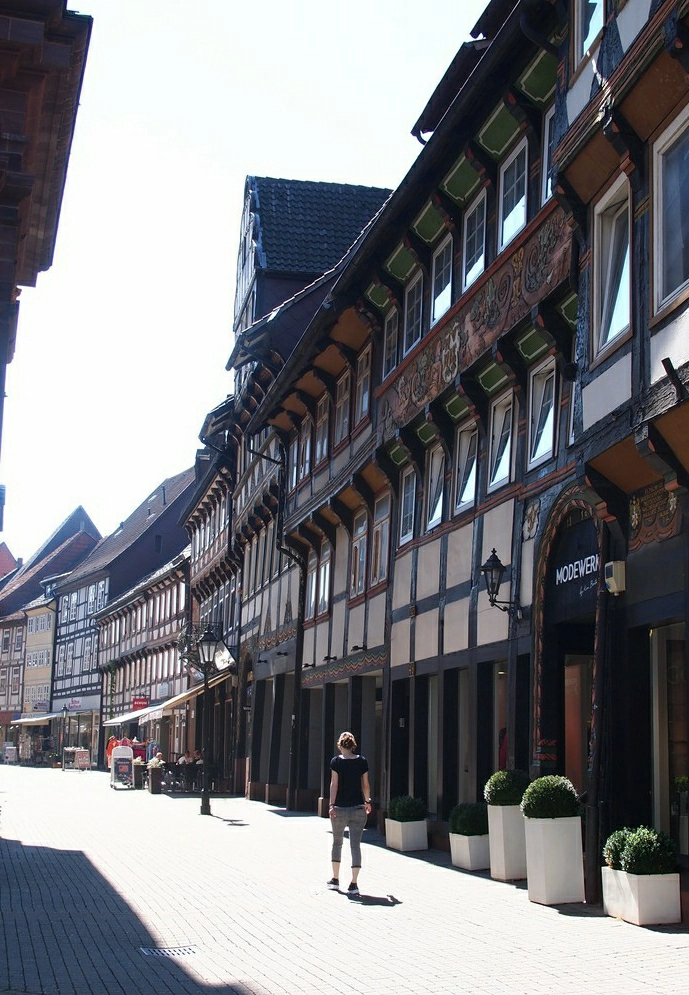


It is absolutely impossible to pass by the information office building – it immediately attracts the eye with its carved splendor. The house was built in 1612. It is called Eickesche Haus after the name of the owner, who carried out the restoration in the 19th century.
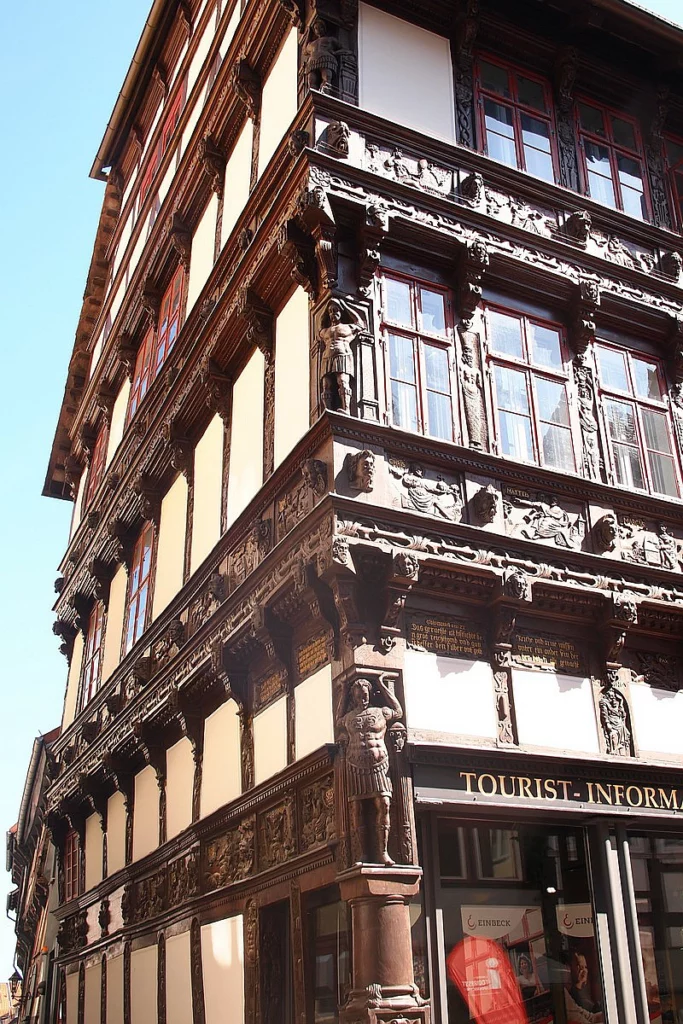
During the restoration, the building was freed from plaster, which was used to cover all buildings for fire protection. Given the number of fires in Einbeck, it is not surprising that they chose practicality over beauty. They had to restore some figures and heads and add missing panels. The building itself used to look a little different, more harmonious. But we should be glad that it was preserved at all, since most buildings of this type perished.
The figures depict virtues and sins, muses, and the liberal arts.
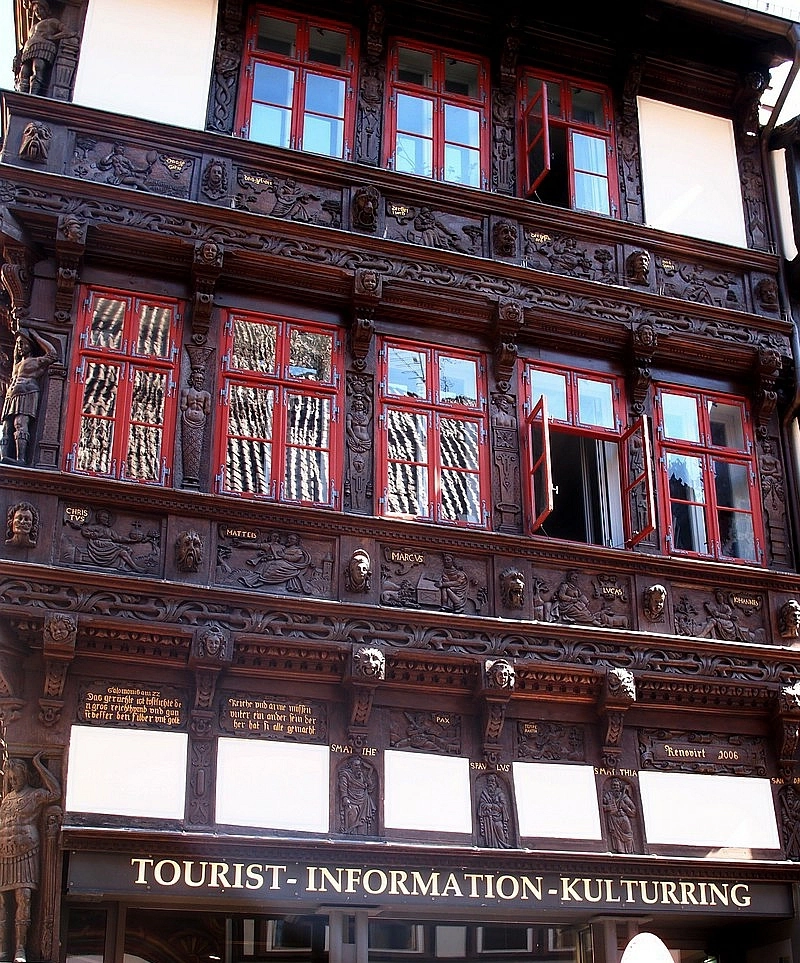

A fire in 1540 destroyed the entire old city inside the fortress walls. The southern part burned several more times. The border of the fires runs exactly through the center of the city, along the Market Square. Therefore, continue to walk along the streets north of the Market Square and along the fortress walls.
In the north, in addition to the old streets, you should see the church of the former Alexandri monastery, where the city began, and its garden. In addition, you can look into the small museum of the city.
Another “immaterial” attraction of the city is the tradition of indigo dyeing fabrics (Blaudruck – on the UNESCO list). The oldest surviving workshop is located in Einbeck (Link).
Einbeck is not overcrowded with tourists. They don’t come here because the city is located a little far from Harz. And Harz is full of attractions; there is always something closer. We arrived here only on our third visit to the region.
West Harz from Goslar to Göttingen
Harz attractions map. From Wernigerode to Tilleda
Coast of Germany. Lower Saxony and Hamburg. What to visit
Luneburg Heath
Harz mountains. Wernigerode old town
Harz. 2. Brocken, Wurmberg
Harz Goslar What to see
Follow me
Do you enjoy the site without cookies? This means that I work for you at my own expense.
Perhaps you would like to support my work here.
Or change your cookie settings here. I don’t use personalized ads

